Motorola Moto G Review
by Brian Klug on December 18, 2013 2:00 PM EST- Posted in
- Smartphones
- Motorola
- Mobile
- *VA
- Cortex A7
- snapdragon 400
- Moto G
Motorola has embraced relatively stock Android since the launch of Moto X. I originally disliked how the Moto X wasn’t really stock, (cue the philosophical discussion about what stock really means), but truth be told the software preload is devoid of what I don’t like about the skinned, operator-adulterated stuff we’d get otherwise. It strikes perhaps the optimal balance between the two, what works is left intact, what tweaks there are seem to be the bare minimum to appease operators and make the experience better for the majority of users.
The Moto G doesn’t deviate from that formula. At launch, the Moto G comes running Android 4.3, the latest possible version supplied by Qualcomm for the platform inside.
Motorola has promised an update to Android 4.4 KitKat in January (probably near the end of the month), this aligns with the software roadmaps I’ve caught glimpses of. Remember that Motorola is still effectively an OEM and subject to the software release cadences of its silicon suppliers.
The Moto G’s unlocked and operator-free status makes it subject to a bit less than the operator-attached variants of the Moto X I’ve played with, like the AT&T address book and status indicator branding. On the Moto G there’s none of that, just the few tweaks that Motorola has added in, like Device ID, Assist, Migrate, Care, and of course their own camera application.
The delta between the Moto X and G on the software front really comes down to subtraction of features it lacks the hardware for. Specifically the Active Display notifications and interface which used a TI MSP430 and leveraged an AMOLED display, and the always-on voice activation (“OK Google Now”) which used a TI C55x DSP. It’s an easy to understand differentiation point between the two products that I can’t complain about, and although I enjoyed those two features, their absence doesn’t really dilute the software choices that make the Moto G enjoyable.
Moto G also adds an FM radio over Moto X. Inclusion of FM radio is something which remains oddly is absent from most flagship handsets, but a must have on the lower end devices.
Just like the Moto X, the bulk of these applications (Camera, FM radio, Boot Services) are updatable over the Play Store. Motorola has effectively decoupled a bunch of their own first party applications from the normal OTA process.
Again I can’t complain about Motorola’s software strategy for the Moto G. I almost hesitate to make the comparison, but Nexus ends up making flagships that are very competitive on cost in the high end segment, the space Moto G is competing in is entirely different. Having Android 4.3 and the promised upgrade to 4.4 within essentially a month is great, but real proof of Motorola’s commitment will be in continued software support beyond that update.


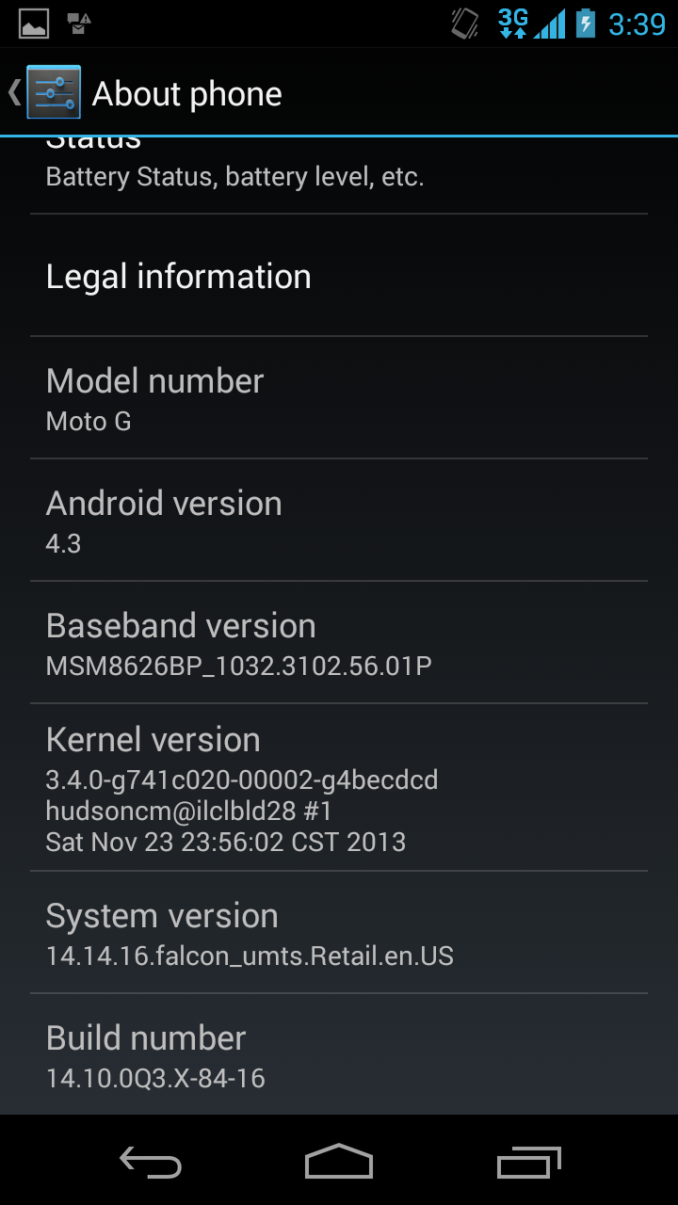
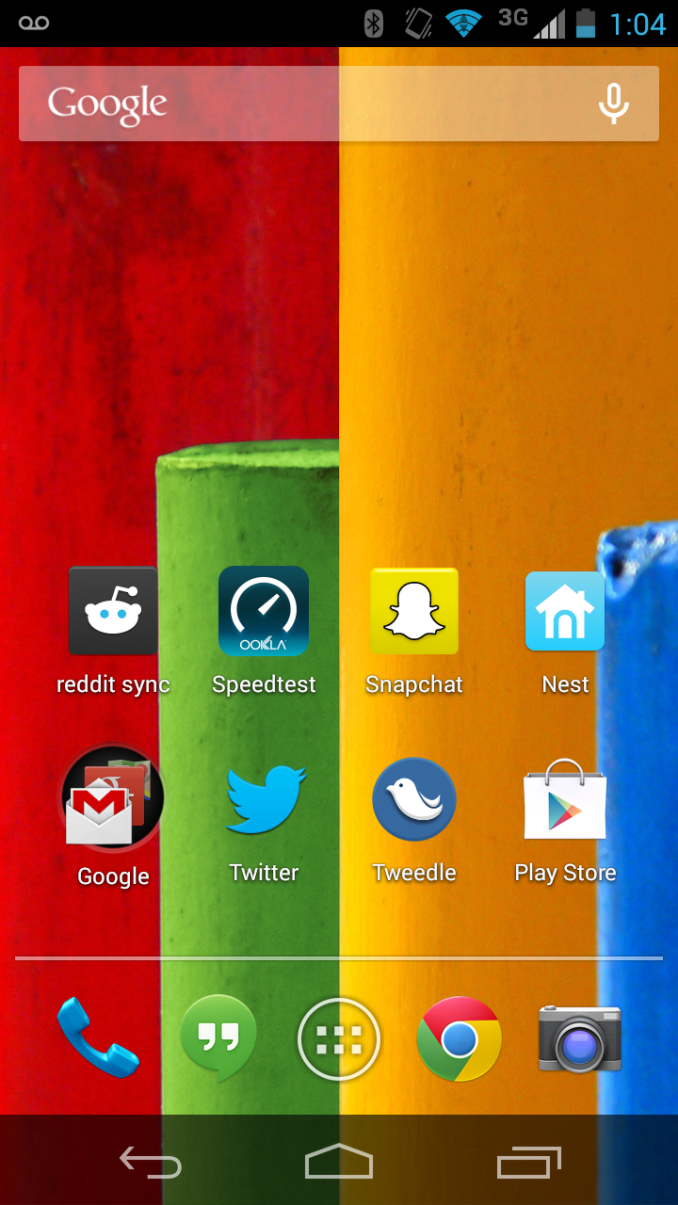
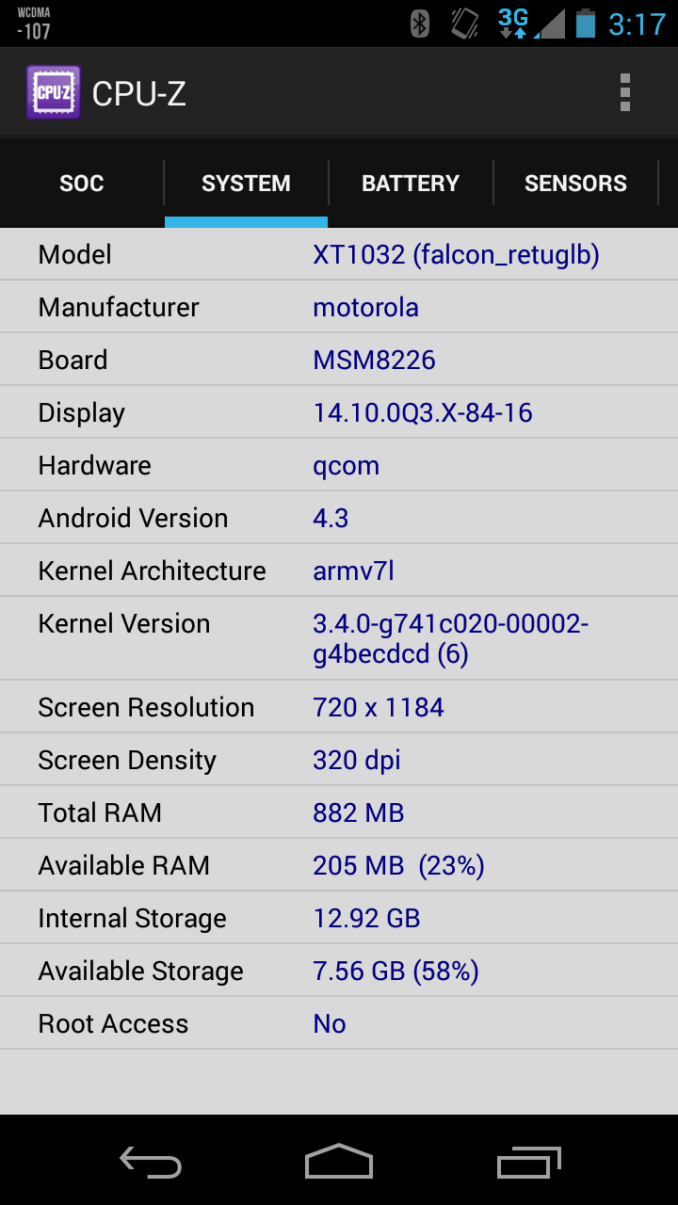
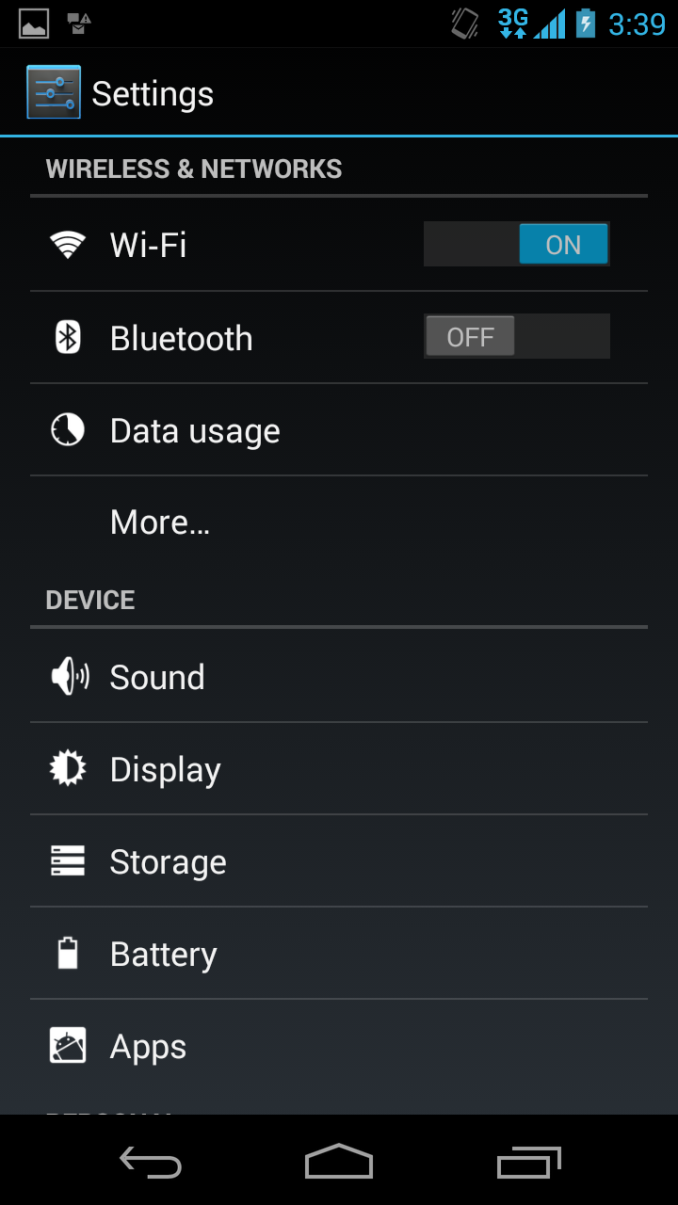
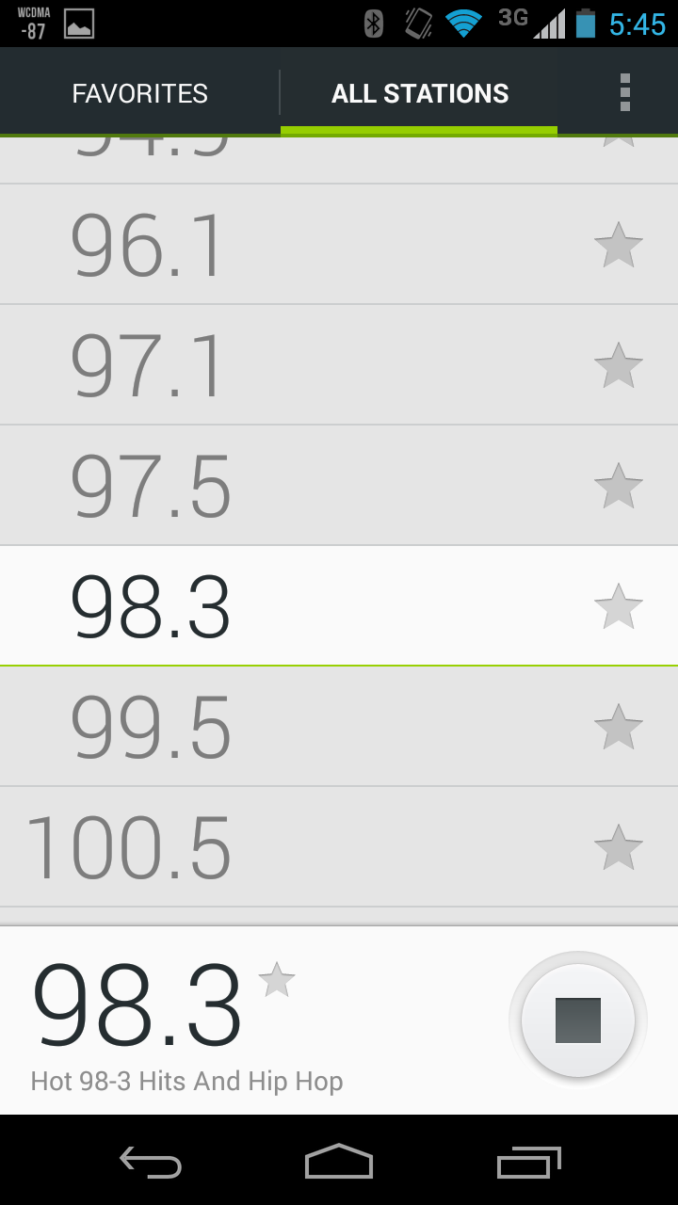
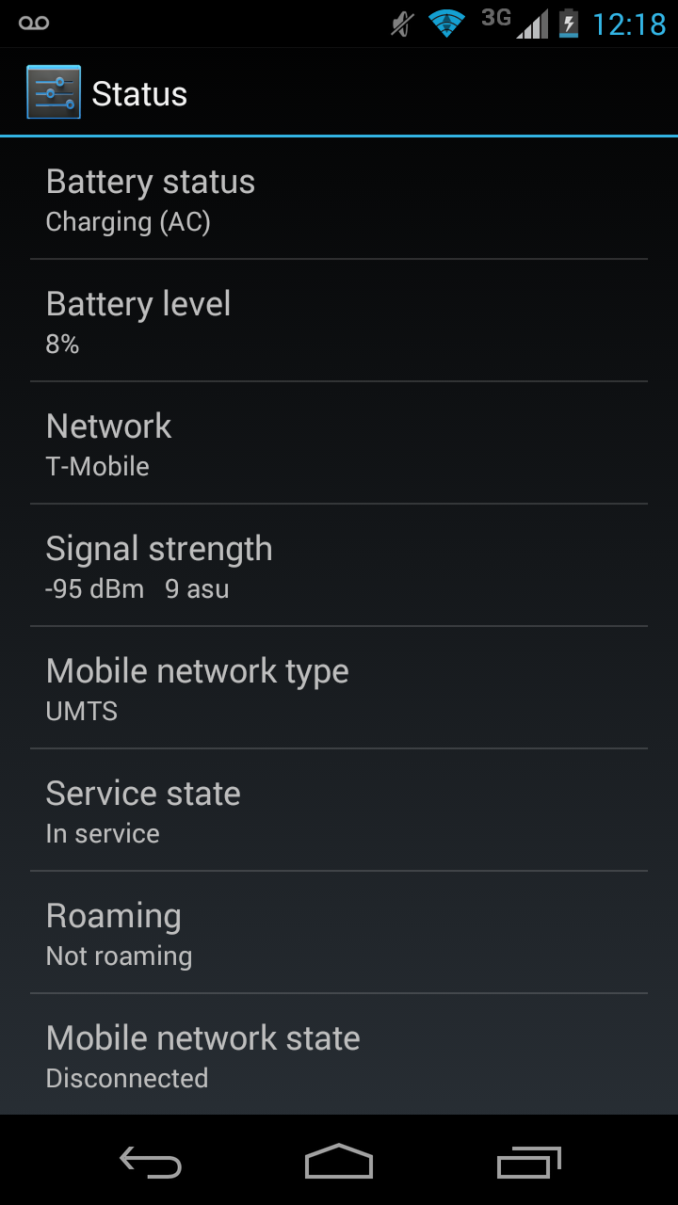








120 Comments
View All Comments
bhima - Monday, December 23, 2013 - link
The market are people that, for example, pay only $25 a month each on a T-mo family plan and they don't want to drop an extra $30 a month for 2 years for a phone, Or sign up for a contract with ATT/Verizon and blow easily $60+ a month. 500mb of data at HSPA+ speed (9mbps in my area) with no overage charge, unlimited talk and text for $25 a month makes this phone a huge winner to those willing to look for a good experience without burning a hole in your wallet.teiglin - Wednesday, December 18, 2013 - link
Every time I read reviews of this I'm surprised at how closely MSM8x26 performs to flagships from as recently as last year. Obviously it isn't really in the running compared to 8974, Apple A7, Exynos 5250, etc., much less APQ8064, so I think this says more embarassing things about companies that shipped quad-A9 flagships in mid-to-late-2012, but still, the end result is that the display and silicon leads to an experience comparable to (if not better than) a GS3 i9300. This is pretty surreal at the sub-$200 price point, while a new i9300 still goes for ~$400. Of course there are other sacrifices and if we're talking about $400 life begins and ends with the Nexus 5, but still, Motorola has really accomplished something with the Moto G. This is the phone I'd buy for my son if he were five years older; hopefully by the time he's old enough to have his own smartphone, Motorola will be still have something comparable on sale so he can get a quality device at this price point.teiglin - Wednesday, December 18, 2013 - link
Exynos 5420. Not really sure where 5250 came from, but... thingssayash - Thursday, December 19, 2013 - link
5250 is now more than a year old, it was the soc in the nexus 10, so yeah.Bobs_Your_Uncle - Thursday, December 19, 2013 - link
By the way, how's that Nokia 1020 review coming?Klug4Pres - Thursday, December 19, 2013 - link
Brian, I am curious about the impact of operating system version on the benchmark comparisons. Presumably the results in your tables are based on whatever version was installed at the time of initial testing, which is perfectly reasonable.However, it would be interesting to gauge the impact of, for example, new Android versions on a device's scores. Is there an appreciable change in performance going from, say, 4.2 to 4.3 or 4.4 on Nexus 4?
I realise it would be a lot of work to try to update all benchmarks on every software release across every OEM, and anyway you do not necessarily retain access to most of the devices you test, but this might be feasible on just the Nexus devices, which I have a feeling you tend to keep around. On the other hand, maybe the results aren't really very interesting.
Qwertilot - Thursday, December 19, 2013 - link
Fascinating to see what happens with and its relatives/competition in next few years.In a sane world this sort of thing would take huge chunks of the market for high end phones. The current market with the very expensive ultra high end models selling so much at such premiums surely can't be sustainable long term.
Only thing is that I'm not sure how rational this market is :)
uhuznaa - Thursday, December 19, 2013 - link
With smartphones and tablets becoming a mass-market it will be as rational as any other market. Like clothing, shoes or food. Which means not very rational, there will be room for huge price spans and very different products, some of them rational and others not at all. This is hard to digest for geeks, I know.Qwertilot - Thursday, December 19, 2013 - link
True. The special thing for the mobile market is the rather big locked in distortions via contracts/subsidies etc.Certainly nice to have this sort of option around.
ESC2000 - Monday, December 23, 2013 - link
problem is that the average person thinks s/he needs the newest shiniest most powerful device that she will probably never take advantage of, and the up front subsidy (but pay out the rear) system facilitates the impulse to purchase an overly powerful device in the US by making Americans less price sensitive. It is really annoying to listen to people who think a small very powerful computer that pushes more pixels than their laptop only costs - and should only cost - $200 at most.